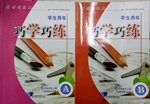题目内容
20.假定英语课上老师要求同学们交换修改作文,请你修改你同桌写的以下作文.文中 共有10处语言错误,每句中最多有两处.错误仅涉及一个单词的增加、删除或修改.增加:在缺词处加一个漏字符号 (∧),并在其下面写出该加的词.
删除:把多余的词用斜线 (\) 划掉.
修改:在错的词下划一横线,并在该词下面写出修改后的词.
注意:1.每处错误及其修改均仅限一词;
2.只允许修改10处,多者 (从第11处起) 不计分.
It was the Christmas.I saw a 7or 8year old boy wearing a man's overcoat what covered him from neck to toe.The sleeves of the coat cut short causally to match the boy's arm long.I went to the nearby shop.As I had a son of a same age,I knew the size.A few moments later,I bought a nice pair of trousers,with a matching overcoat.Wearing Santa's hat,I went back and give the new clothes to her.The unexpected joy on his face thrilled me.Unplanned charity brings a strangely sense of contentment that money can ever buy.
分析 作者在本文中讲述了自己在圣诞节时看到了一个穿着被剪了袖子的大人的衣服的小男孩,便起了善心,到附近的商店给小男孩买了身衣服,扮作圣诞老人送给男孩,
看到男孩高兴的表情,作者认为这种满足感是金钱所买不到的.
解答 It was the Christmas.I saw a 7or 8year old boy wearing a man's overcoat what covered him from neck to toe.The sleeves of the coat∧cut short causally to match the boy's arm long.I went to the nearby shop.As I had a son of a same age,I knew the size.A few moments later,I bought a nice pair of trousers,with a matching overcoat.Wearing Santa's hat,I went back and give the new clothes to her.The unexpected joy on his face thrilled me.Unplanned charity brings a strangely sense of contentment that money can ever buy.
详解:
1.去掉the;考查习惯用法,在英语习惯中Christmas前面不加the.
2.year改为years;考查名词的复数,前面有 7or 8修饰,所以要用复数形式years.
3.what改为which;考查定语从句,分析句子结构可知这是一个非限制性定语从句,先行词为overcoat,故用关系代词which.
4.coat后面加were;考查被动语态,句子的主语为The sleeves,与动词cut之间是被动关系,故加were构成被动语态.
5.long改为length;考查名词,arm length意为"手臂的长度".
6.a改为the;考查冠词,这里用定冠词the表示特指.
7.give改为gave;考查动词的时态,此处gave与前面的went作句子的并列谓语.
8.her改为him;考查人称代词,结合上下文语境可知,此处的人称代词指代文中提到的boy,故用him.
9.strangely改为strange;考查形容词,此处用形容词作定语,修饰后面的名词sense.
10.ever改为never;考查句意,分析句意为"毫无计划的善事带来的满足感是金钱买不到的",故用否定形式never.
点评 短文改错首先要整体理解短文,把握短文的中心思想,确定文章的基本时态,然后从语法,词汇,固定搭配,句式结构等方面详细分析短文内容,找出文中的错误并加以修改.

 每课必练系列答案
每课必练系列答案 巧学巧练系列答案
巧学巧练系列答案| A. | in a panic | B. | in a hurry | C. | at a loss | D. | at a discount |
| A. | by which | B. | to which | C. | in that | D. | so that |
| A. | as | B. | while | C. | since | D. | when |
| A. | for the first time | B. | every time | ||
| C. | moment | D. | instant |
| A. | in | B. | over | C. | from | D. | of |
| A. | of | B. | in | C. | by | D. | through |
 Anyone watching the autumn sky knows that migrating birds fly in a V formation,but scientists have long debated why.A new study finds that these big-winged birds carefully position their wingtips and flap (拍动) at the same rate,probably to catch the upward movement of air and save energy during flight.
Anyone watching the autumn sky knows that migrating birds fly in a V formation,but scientists have long debated why.A new study finds that these big-winged birds carefully position their wingtips and flap (拍动) at the same rate,probably to catch the upward movement of air and save energy during flight.